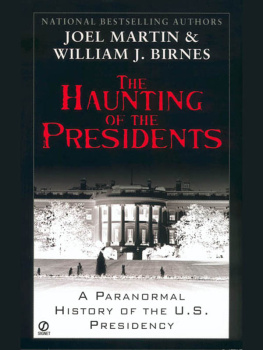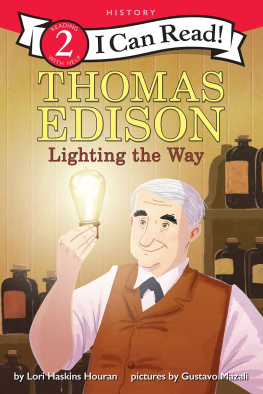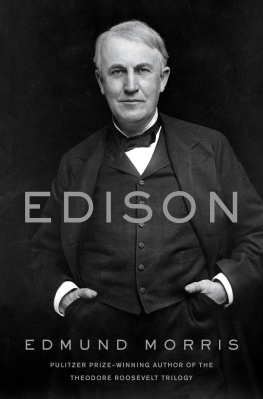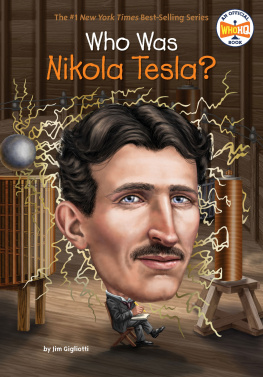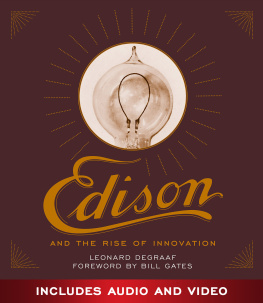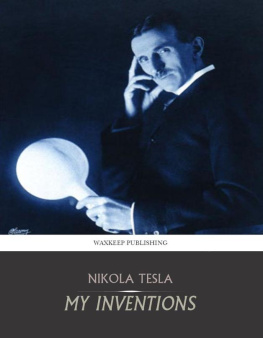Acknowledgments
Bill Birnes, With Much Appreciation
Kris Rus
Catherine Erdelyi
Thomas Santorelli
Special thanks to: Leonard DeGraff, Roxanne Salch Kaplan, Patricia Ippolito, Gaylon Emerzian. Also: Cambria Weintraub, Caleb Weintraub, Arlene And Michael Rosich. Eternally: Stephen Kaplan, Chris Martin, Evelyn Moleta, John Blake, Vladimir Rus, Father John Papallo.
We are grateful to Jay Cassell, Veronica Alvarado, and to the management and editorial staff at Skyhorse Publishing for guiding this book through all of its stages.
Acta fabula est, plaudit
Caesar Augustus
Copyright 2017 by William Birnes and Joel Martin
All rights reserved. No part of this book may be reproduced in any manner without
the express written consent of the publisher, except in the case of brief excerpts in critical reviews or articles. All inquiries should be addressed to Skyhorse Publishing,
307 West 36th Street, 11th Floor, New York, NY 10018.
Skyhorse Publishing books may be purchased in bulk at special discounts for sales promotion, corporate gifts, fund-raising, or educational purposes. Special editions can also be created to specifications. For details, contact the Special Sales Department, Skyhorse Publishing, 307 West 36th Street, 11th Floor, New York, NY 10018 or info@skyhorsepublishing.com.
Skyhorse and Skyhorse Publishing are registered trademarks of
Skyhorse Publishing, Inc., a Delaware corporation.
Visit our website at www.skyhorsepublishing.com.
10 9 8 7 6 5 4 3 2 1
Library of Congress Cataloging-in-Publication Data is available on file.
Cover design by Rain Saukas
Cover photo credits: Library of Congress
Print ISBN: 978-1-5107-1876-0
Ebook ISBN: 978-1-15107-1877-7
Printed in the United States of America
Dedication
This book is dedicated to Kris and to Nancy Birnes
Chapter 4
Backgrounds to Edison from the Great Age of Spiritualism to the Age of Science and Industrialism
There is no death! What seems so is transition; / This life of mortal breath, / Is but a suburb to the life elysian.
Henry Wadsworth
Longfellow
In addition to the individuals who created their own times, think of those individuals like Gutenberg, Isaac Newton, Albert Einstein, and Sigmund Freud, the greatness of whose lives was also created by the times into which they were born. The needs of the environment propelled some of these individuals toward their greatest discoveries and creations. Such was the case in the life of Thomas Alva Edison, born just one year before the beginning of one of the greatest intellectual movements in the United States and Europe, a movement that would shape Edisons thinking, as he both rejected it as an inventor and then tacitly embraced it in the last decade of his life. This movement was called the Great Age of Spiritualism, wherein the personalities that dominated it, some of whom wound up conducting spiritual encounters at the White House, and others who laid down the intellectual underpinnings for National Socialism in Europe, were also the builders of the cultural matrix into which Thomas Edison was born.
Ironically, the life of one of the most important scientists in the fields of electricity and chemistry, Michael Faraday, who discovered the principles of electromagnetic field induction, the basis for the theory and practice of direct current that Edison developed as an industry, overlapped the Great Age of Spiritualism by twenty years. Hence, even one year after Edisons birth in 1847, the Great Age of Spiritualism had begun, right during the greatest influence of Michael Faraday presaging the age of science and invention. These two streams of thought and discovery would ultimately influence Edisons work. And though both Faraday and Edison would dismiss spiritualism as fraudulent, Edison would ultimately employ the very people he disparaged as spiritualists to summon the spirits of the dead into his photon beam as proof of the concept of his spirit phone.
The Great Age of Spiritualism officially began on Friday evening March 31, 1848, in the modest wooden-frame home of the Fox family in a tiny upstate New York hamlet. Hydesville was just a group of homes and several stores and mills, typical of small farming villages that dotted the countryside.
On December 11, 1847, just two weeks before Christmas, John and Margaret Fox and two of their daughters, ten-year-old Margaretta and seven-year-old Catherine (called Kate), both pretty girls with dark hair and expressive eyes, had moved into the unassuming rental house in Hydesville, New York. The Foxes had other older children who were living elsewhere with their own families. They were a close family, although Mrs. Fox was the friendlier, while Mr. Fox, a blacksmith, was largely impassive and laconic. Both the Foxes were religiously devout and prayed daily, relying on their faith to get them through the hard winter that froze western New York State to a standstill. However, despite their religious beliefs, they were unprepared for what would happen to their lives only a few months after they moved into the house.
From the previous resident, the house already had a reputation for unidentified and mysterious rapping noises, but the Foxes ignored the rumors. The previous tenants, the Michael Weekman family, claimed they were troubled by loud banging at the front door, but when they sought to answer it, no one was ever there. There was also the night when the Weekmans eight-year-old daughter cried out that she felt a cold and clammy hand pass over her face. The disturbances were sufficient to cause the Weekmans to move out after living in the apparently troubled house for less than two years.
Is That You, Mr. Splitfoot?
The quiet of the Foxes first few months in the house was broken during March 1848 when they heard noises they could not identify. Well, after dark one night, when the noises were especially loud, the Foxes searched the house by candlelight but could not find anything that might have caused the tumult. Mrs. Fox conceded she was frightened by the inexplicable rapping and mysterious sounds of footsteps. She drew her own conclusion about the noises: some unhappy restless spirit was haunting the house.
On the evening of March 31, 1848, the Foxes went to bed early, but it wasnt long before they were awakened by the puzzling noises. A search of the house again yielded no explanation. The children also heard the rapping and tried to imitate it by snapping their fingers. The children named the unseen entity Mr. Splitfoot because of their mothers fear that the disturbance was the work of the devil.
Kate, the youngest daughter, commanded, Mr. Splitfoot, do just as I do, clapping her hands. The sounds instantly followed her with the same number of raps. Now it was Margarettas turn, and she said in jest, Count one, two, three, four, hitting one hand against the other, and the raps answered as before.
Then Kate said excitedly, Oh, Mother, I know what it is. Tomorrow is April Fools Day and somebody is trying to fool us.
Mrs. Fox agreed and tried to test the noise by asking it to rap out her childrens ages successively. The rappings were correct. She asked it next if the answers were being given by a human being. There was no answer. Then she queried, Is this a spirit? If you are, make two raps. The spirit complied with two loud sounds. Mrs. Fox asked the spirit if it had been injured. If so make two raps. There were two raps in reply. Were you injured in this house? she inquired. Two raps answered her, indicating yes.
Margaret Fox became alarmed, and called neighbors to her house. One was Mrs. Mary Redfield, who wasted no time telling her there were no spirits plaguing her and her family. She presumed the young Fox sisters were playing childish pranks. Mrs. Redfield conducted her own test. She asked the spirit questions. When she received correct answers, she became frightened and left.


